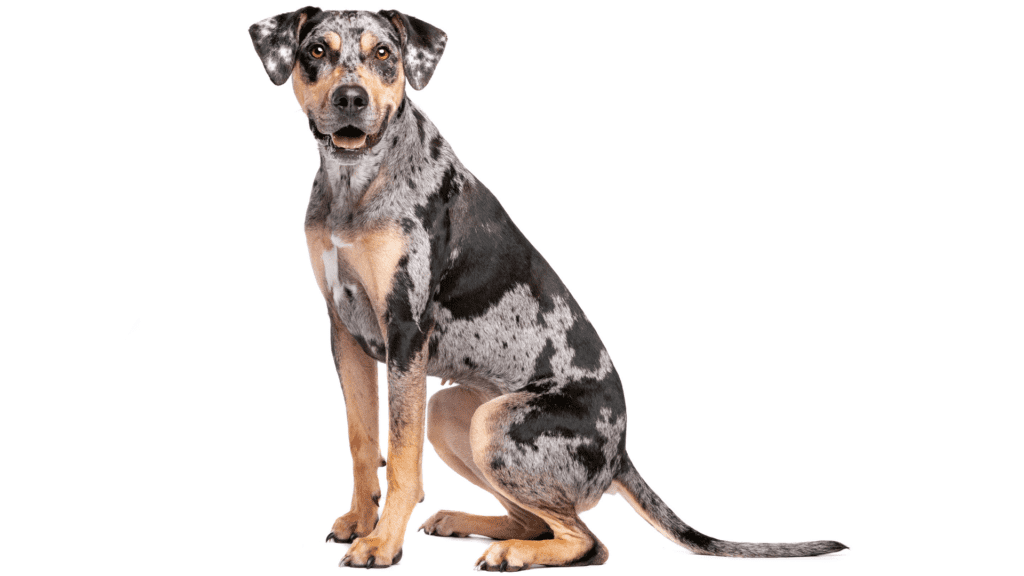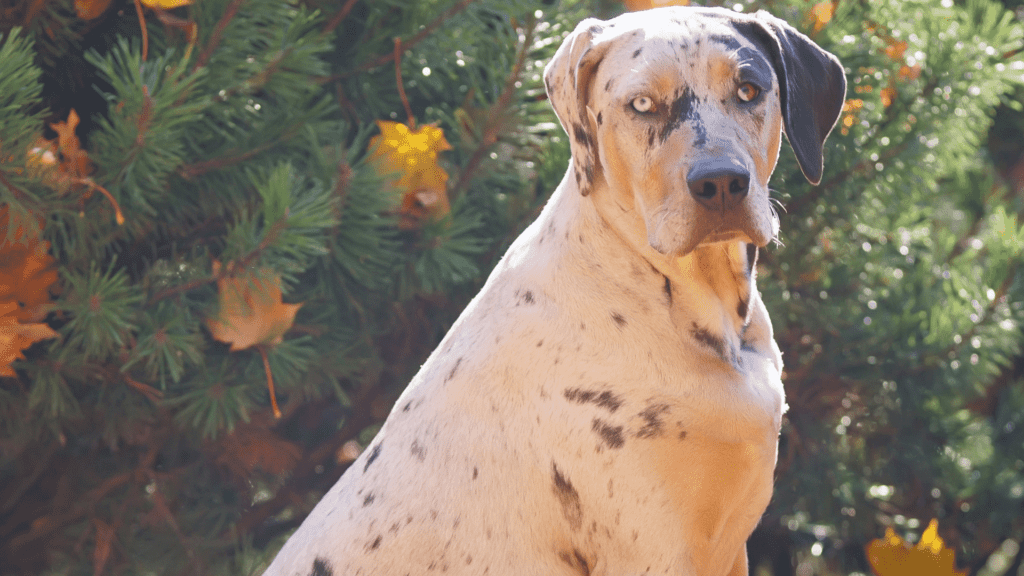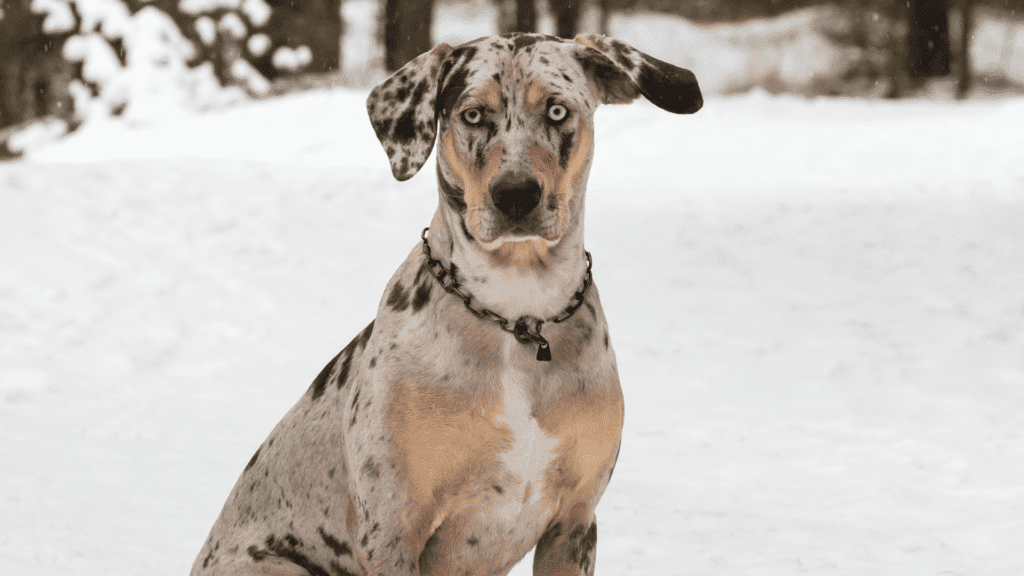The short answer is yes, Catahoula Leopard Dogs are rare. That’s if you live far from Louisiana and other parts of the southeastern US.
Catahoula Leopard Dogs are a breed that originated in Louisiana. In fact, the breed was declared Louisiana’s official state dog in 1979.
While they’re fairly common in surrounding areas of the south, they’re rarely seen in any other place. Only a handful exist outside of the state, and even fewer outside of the US.
Why Are Catahoulas a Rare Breed?

Catahoulas are focused, cheerful, and affectionate dogs bred for hunting and herding. So, what makes this breed so rare in places outside of Louisiana and the southeastern US?
Breed Origins
There’s still a lot of mystery surrounding what breeds are in a Catahoula’s ancestry.
Some say that they were a result of the mid-1700s settlers breeding wolf dogs and Beauceron dogs. Some say they’re from the Spanish colonizers’ mastiffs and Greyhounds that bred with Native American dogs.
One thing’s for sure; they were bred to adapt to Louisiana’s swamps and forests. Their leopard-like coat coloration helps with camouflage, and their big, muscular build helps with running and hunting.
Because they have been bred so fittingly to their environment, the breed has since stayed close to its origins.
While Catahoulas are gaining more popularity, most of the breeders are still from the southeastern US. The breed hasn’t had the chance yet to expand out of its original breeding ground.
They’re a Relatively New Breed
Unlike the Mastiffs and Poodles — breeds that can be dated back hundreds of years ago — Catahoulas are a relatively new breed.
It was only in 1995 that the United Kennel Club (UKC) formally recognized Catahoulas as a breed. Compare this to the Poodles, which were recognized in 1914, and the Mastiffs in 1948.

Breeding Challenges
Unlike a lot of popular dog breeds around the world, it can be difficult to breed true Catahoulas. There are certain breeding challenges; take their coat pattern and eye color, for example.
The gene for their merle coat pattern is closely associated with deafness. In relation to this, the breed is also known to have different eye colors — one of which is blue.
The merle coat pattern is most often associated with the gene for blue eyes. Catahoulas, along with Siberian Huskies and Border Collies, are some of the few dog breeds that can possess naturally blue eyes.
Unfortunately, dogs with blue eyes are at a greater risk for conditions that lead to blindness.
To breed a true Catahoula, you need to have a pedigree dog that completely satisfies the breed standards and is healthy at the same time. This can be difficult to find outside of the southeastern US, hence contributing to their rarity.
Their Breed Status Isn’t 100% Clear (Yet)
While the UKC recognizes Catahoula as a breed, the American Kennel Club (AKC) lists them as “Foundation Stock.” This means that the breed hasn’t achieved full AKC recognition yet.
This also means that the breed standards for Catahoulas aren’t as formalized and standardized as other AKC-recognized breeds. This makes it a little challenging to identify true Catahoulas.
However, the good news is that the breed’s “Foundation Stock” classification is a step in the right direction. The AKC’s Foundation Stock Service® maintains the pedigree and records of Catahoulas as a pure breed.
Since record-keeping is one of the requirements for full AKC recognition, hopefully, the FSS® will help the breed achieve the goal of full recognition in the next few years.
They’re an Energetic Bunch
Aside from herding and protecting livestock, Catahoulas were also used as hunting dogs. They hunted large game as well as the feral hogs that occupied Louisiana’s swamps and forests.
Hence why they’re also commonly called Catahoula Hog Dogs or just hog dogs. Just like any other working and hunting dog, Catahoulas are overflowing with energy.
This may contribute to the reason why they aren’t bred a lot outside of rural areas. They don’t do as well as apartment or city dogs because they have a high energy requirement.
They need exercise and frequent physical stimulation. If their energy requirements aren’t met, they may end up being destructive to release all the pent-up energy.
Where to Get Catahoula Leopard Dogs

Since they’re a relatively rare breed depending on where you live, you might be wondering where and how to get a Catahoula.
First and foremost, You should consider checking local shelters to see if they have any Catahoulas that are up for adoption. Many homeless dogs are still looking for their forever homes.
It’s also relatively cheaper to adopt, and shelters will often only collect a small fee. This fee will also go into helping other dogs in the shelter.
If you’ve really decided to buy a Catahoula, make sure you only go to trusted and reputable breeders. As we’ve previously mentioned, achieving a true Catahoula breed can be challenging.
Remember that they’re predisposed to certain conditions because of the traits that they have. Always confirm and verify with your breeder that their Catahoula puppies are healthy and happy.
Should You Get a Catahoula Leopard Dog
With their beautiful coat colors, mesmerizing eyes, and loyal, affectionate temperament, Catahoulas are a great breed to have around. Still, there are a few things to consider before choosing to get one.
The first of which is that you have to consider if they fit the lifestyle you’re currently living. Their breed’s rarity isn’t and shouldn’t be the only consideration.
These dogs are bred as hunters and herders. Aside from finding them in the swamps of Louisiana, they can also be found in large estates, farms, and ranches.
Raising them in apartments or in the suburbs with little backyard space will quickly become a challenge since they’re naturally accustomed to open spaces. They’re an active bunch with high energy needs and a potential to get destructive if these needs are not met.
Generally, they also aren't the best choice for first-time pet owners. While they aren't exactly stubborn, they're known to be independent if the owner doesn't assert dominance.

Calvin is the co-founder and one of the main contributors to dogtemperament.com. He has been an avid dog lover all his life. He enjoys researching and sharing great ideas on how you can avoid common pitfalls of dog ownership and build the most loving and enjoyable relationship with your dog.